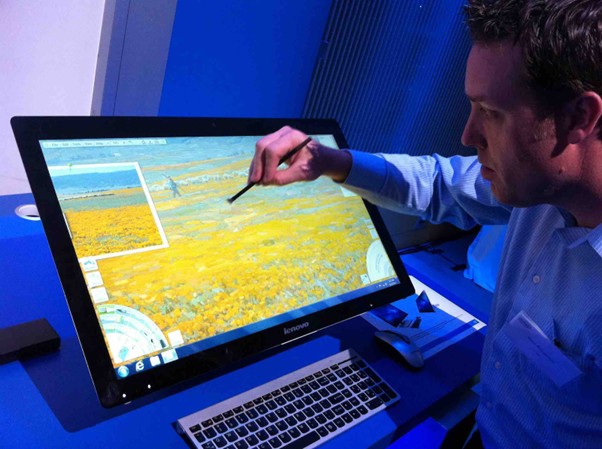How AIO PCs Provide Performance With Integrated Hardware
Have you ever wondered how some computers manage to deliver exceptional performance without the clutter of multiple components? Why do businesses, gamers, and even casual users increasingly turn to All-in-One (AIO) PCs? The answer lies in their revolutionary design. By combining the display, processor, storage, and other critical hardware into one sleek unit, AIO PCs simplify setup while enhancing functionality.
But how does this integrated hardware actually maximize performance? What makes it more efficient than traditional desktop setups? Let’s explore the inner workings of All-in-One PCs and uncover why they’re becoming the go-to choice for those who value efficiency, power, and aesthetics.
Streamlined Design Eliminate Bottlenecks
All-in-One PCs feature a streamlined architecture where all components are built to work seamlessly together. This integration reduces potential compatibility issues that can arise in traditional desktops.

For example, devices like the 256 GB SSD IdeaPad 1 AMD laptop demonstrate how well-designed systems ensure smoother performance by aligning hardware components effectively, much like AIO PCs do in their unified setup.
An All-in-One PC integrates all the traditional components of a desktop computer—processor, memory, storage, and more—into the monitor itself. This design eliminates the need for a separate tower, providing a compact and streamlined setup.
Why Does Integration Matter?
When hardware like the processor, graphics card, and RAM are designed to coexist within the same unit, they communicate faster. This results in:
- Reduced Latency: Data flows smoothly between components.
- Optimized Power Distribution: Components share a single power source, improving efficiency.
- Enhanced Cooling: Unified cooling systems dissipate heat more effectively.
By eliminating the physical and operational disconnect found in separate systems, AIO PCs minimize performance bottlenecks, ensuring smooth operations.
Performance Boost With Unified Graphics And Display
AIO PCs often come with integrated graphics processors (GPUs) tailored to their displays. This synergy between GPU and screen delivers optimal visual performance.
Key Benefits of Integrated Graphics
- Better Resolution Handling: Integrated hardware ensures the screen and GPU are calibrated for vibrant colors and sharp imagery.
- Energy Efficiency: Unified systems use less energy compared to setups requiring separate graphics cards.
- Reduced Input Lag: Faster rendering makes AIOs great for casual gaming and video editing.
For users who prioritize crystal-clear visuals and efficient performance, this integration is a game-changer.
Simplified Upgrades: Breaking The Myth
A common misconception about AIO PCs is that they lack upgradeability. While it’s true they aren’t as modular as traditional desktops, they’re far from static.
What Can Be Upgraded in an AIO?
- Memory (RAM): Many AIOs allow users to increase RAM capacity, boosting multitasking capabilities.
- Storage: SSDs and HDDs in AIOs are often accessible, making it easy to upgrade storage space.
Two Types of Upgrade Options
- User-Friendly Upgrades: For basic changes like adding RAM.
- Manufacturer Support: For larger upgrades like GPU replacement (available in select models).
This balance between integrated hardware and upgrade options makes AIO PCs versatile enough to grow with your needs.
Space-Saving Without Compromising Power
Compact Design Meets Performance
All-in-One PCs are celebrated for their space-saving design. But does this compactness compromise their power? Not at all.
- Optimized Hardware Placement: Components are arranged for maximum efficiency.
- Powerful Configurations: Many AIO PCs house high-performance processors, rivaling traditional desktops.
For professionals working in tight spaces or those wanting a clutter-free desk, AIO PCs deliver performance without taking up unnecessary room.
Custom-Tuned Audio For An Immersive Experience
Incorporating high-quality speakers directly into the unit, AIO PCs enhance audio output while saving space.
Why Built-In Audio Matters
- Reduced Cable Clutter: No need for external speakers.
- Enhanced Collaboration: Perfect for video calls and meetings.
- Rich Soundscapes: Ideal for entertainment purposes.
Unlike traditional setups, where audio often feels like an afterthought, AIO PCs integrate it into the design, delivering a well-rounded user experience.
Energy Efficiency: A Green Computing Option
All-in-One PCs are designed to consume less power, making them an eco-friendly alternative.
How Do AIO PCs Save Energy?
- Fewer Components: Shared hardware reduces energy demands.
- Integrated Power Management: Built-in systems optimize energy usage based on workload.
- LED Displays: Energy-efficient screens consume less power while delivering vibrant visuals.
For users conscious about their carbon footprint, AIO PCs strike the perfect balance between performance and sustainability.
The Future Of AIO PCs: Smart Features And AI Integration
How AI Enhances AIO Performance
The next generation of AIO PCs will leverage artificial intelligence to:
- Predict Workloads: Adjust power and resources based on usage.
- Enhance User Experience: From voice controls to personalized settings.
Smart Features to Watch For
- Biometric authentication for improved security.
- Advanced touchscreens for intuitive navigation.
The integration of AI and smart technology is set to redefine what AIO PCs can achieve.
Conclusion
All-in-One PCs maximize performance by blending integrated hardware, compact design, and smart engineering. From eliminating bottlenecks to delivering energy efficiency and seamless upgrades, they cater to a wide range of users, whether you’re a professional, gamer, or casual user.
Similarly, devices like the 15 inch AMD Ryzen IdeaPad laptop showcase how integrated hardware can offer a balance between power and portability, making them another excellent option for users seeking efficiency.
As technology continues to evolve, AIO PCs will only grow more powerful and versatile. Whether you value performance, aesthetics, or functionality, these systems offer a glimpse into the future of computing—efficient, sleek, and undeniably powerful.

